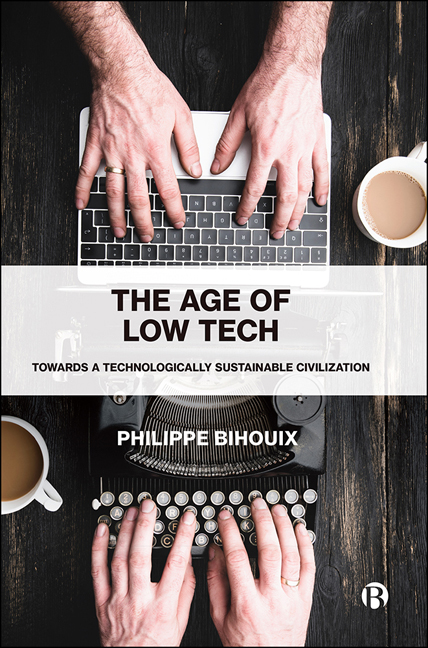Book contents
- Frontmatter
- Contents
- List of Figures and Tables
- Acknowledgements
- Preface to the English Edition
- Prologue: The Mad Dance of the Shrimps
- Part I The Rise and Fall of ‘Engineering Miracle-Workers’
- Part II The Principles of Simple Technologies
- Part III Daily Life in the Era of Simple Technologies
- Part IV Is ‘Transition’ Possible?
- Epilogue: A Dream If Ever There Was One
- Notes
- Index
Preface to the English Edition
Published online by Cambridge University Press: 19 March 2021
- Frontmatter
- Contents
- List of Figures and Tables
- Acknowledgements
- Preface to the English Edition
- Prologue: The Mad Dance of the Shrimps
- Part I The Rise and Fall of ‘Engineering Miracle-Workers’
- Part II The Principles of Simple Technologies
- Part III Daily Life in the Era of Simple Technologies
- Part IV Is ‘Transition’ Possible?
- Epilogue: A Dream If Ever There Was One
- Notes
- Index
Summary
A repeated theme in the story of humanity is its relationship with resources. Historically, the human population of the Earth survived on what could be gathered, hunted, fished, then grown on the land, and on energy from the burning of biomass, human and animal labour, and then wind and movement of water. Mineral use was generally constrained by the energy and tools available and by the need to use wood for smelting. This limited the population that could be sustained and the production and consumption per capita.
With the coming of the Industrial Revolution, the use of coal and then, increasingly, oil and natural gas allowed more energy to be expended, more land to be brought into food production, more population, everlarger conurbations and transportation systems. The increase in industrial production and consumption resulted from an increase in the use of all manner of materials, whose extraction and production were enabled by the use of large quantities of fossil fuel energy.
However, the production of raw materials, their transformation into artefacts, and the disposal of the products at the end of their use led to increasing environmental impacts. It has been clear for some time that a number of constraints impinge upon our ability to maintain such material flows of the ‘linear economy’ – the availability of material resources, especially fossil fuels, the ability of the biosphere to cope with quantities of waste, various pollutions and emissions, especially greenhouse gases resulting from the combustion of fuels and the impact of agriculture. These constraints threaten the continuation of economic activities and ultimately the ability of the Earth to support the human population.
In order to address the challenges that energy and resource constraints impose, a number of technological solutions have been proposed, including transitions to renewable energy and biotechnologies, the use of ‘smart’ digital tools to improve the efficiency of resource use, and adoption of a ‘circular economy’ in which much more extensive use is made of repair and refurbishment and material recycling. At the moment, these different technological solutions are heavily promoted, in particular as a way of addressing climate change, with the view that through research and development and through continuous innovation we can tackle this existential threat while maintaining ‘green growth’.
- Type
- Chapter
- Information
- The Age of Low TechTowards a Technologically Sustainable Civilization, pp. ix - xiiPublisher: Bristol University PressPrint publication year: 2020



